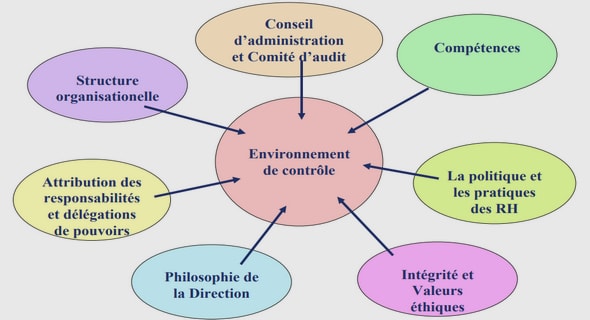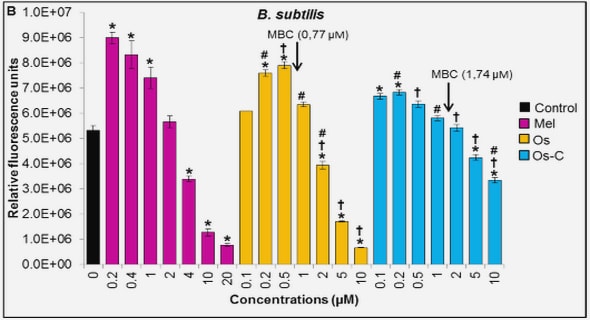Get Complete Project Material File(s) Now! »
Plane Wave Propagation in an Isotropic Poro-elastic Medium
A porous material is a medium that consists of a solid frame, also called matrix or skeleton, that incorporates pores typically filled with a fluid. Hence, such a material includes two phases: solid and fluid. Interaction arises between these two phases when a sound wave propagates in the medium which leads to various physical properties that are not common for other classical media [48]. In real life porous materials are encountered in several fields, which made the researchers interested in the investigation about the behavior of acoustic waves in these media. For example, in the geophysics domain, the characterization of porous rocks by the mean of acoustic wave propagation gives information about the rock and soil constitution. In the biomedical field, the study of acoustic wave propagation in porous bones allows the diagnosis of some bone diseases such as osteoporosis.
In the developed models by researchers for acoustic wave propagation in porous media, two cases were distinguished regarding the rigidity of the porous structure. In the first case, when the porous material is filled by a lightweight fluid such as air, the skeleton is considered heavy with respect to that fluid. Hence, when an acoustic wave travels through the material, the skeleton does not vibrate (stationary), the reason why the porous structure is called rigid. In this case, the wave propagates only in the fluid, with no displacement of the solid phase, and the porous medium is approximated to an equivalent fluid, similar to a free fluid whose characteristics are modified by the presence of the solid skeleton. The model developed to describe this case is called equivalent fluid model. It was established by Zwikker and Kosten in 1949 [49], who modeled the acoustic wave in materials incorporating air filled cylindrical pores, taking into consideration the thermal and viscous interactions in the medium: the viscous effects are taken into account by modifying the density of the fluid phase and the thermal effects by modifying its dynamic compressibility modulus. The second case is when the porous structure is elastic, which means that the acoustic wave propagates in both the skeleton and the filling fluid. This case was elaborated by Biot [50, 51] few years later on; in his model, Biot considers the separate motions of the elastic solid skeleton and the fluid phase, taking into account the coupling between the two phases. Since then, Biot’s model has been considered the most general model to describe the acoustic wave propagation in porous saturated media. Contributions to Biot’s model were then brought by Attenbourgh [52, 53], Johnson et al. [54], Champoux and Allard [55], and Lafarge et al. [56], who introduced some parameters that extend the validity of Biot’s model to include a larger frequency range, taking into account the thermal effects that develop when the fluid filling the pores is a gas [57]. In the following we consider only isotropic homogeneous poro-elastic media saturated by fluids (non-gazes), hence the viscous effects are only taken into consideration, while the thermal effects are neglected.
Wave Equations in an Isotropic Poro-elastic Material – Biot’s Theory
As mentioned earlier, Biot’s model considers separate motions of the solid and fluid phases in the porous material following an acoustic wave propagation. Thus, in Biot’s theory, the equations of motion for each of the fluid and solid phases are derived based on three types of coupling between these two phases: inertial, potential and viscous. For an isotropic porous medium, three propagating modes are predicted: two longitudinal waves and one shear wave. One of the longitudinal waves is called first type or fast wave, while the other is called second type or slow wave.
Characteristic Matrix of a Poro-elastic Isotropic Layer
In this work, the porous medium is modeled based on the Biot’s theory as defined in Section 1.4.2. In a poro-elastic layer, six partial waves can propagate: two longitudinal waves each in both directions ( , , and ), and shear waves in both directions as well ( and ) as shown in Figure 2-4. Accordingly, the waves angles are denoted by , and . The partial waves ± and ± are associated with the solid phase, while the partial waves ± are related to the liquid phase in the bulk porous material. In order to obtain the medium characteristic matrix, the wave numbers must be calculated first. For calculations simplicity purpose, and since the medium is considered to be isotropic, the waves will be represented by their displacement potentials [64] instead of the displacement vectors only to derive the wave numbers.
Table of contents :
ACKNOWLEDGEMENTS
ABSTRACT
RÉSUMÉ
TABLE OF CONTENTS
GENERAL INTRODUCTION
CHAPTER 1 HISTORICAL AND THEORETICAL BACKGROUNDS
1.1 Modeling of a Plane Wave Propagation in a Multilayer
1.2 Plane Wave Propagation in an Isotropic Elastic Solid
1.2.1 Stress and Strain in a Deformable Solid
1.2.2 Stress Strain Relationship for an Isotropic Elastic Solid
1.2.3 Wave Equation in an Isotropic Elastic Solid
1.3 Plane Wave Propagation in a Fluid Medium
1.4 Plane Wave Propagation in an Isotropic Poro-elastic Medium
1.4.1 Background
1.4.2 Wave Equations in an Isotropic Poro-elastic Material – Biot’s Theory
1.5 Conclusion
CHAPTER 2 DISPLACEMENTS AND STRESSES IN INDIVIDUAL LAYERS OF A MULTILAYERED STRUCTURE
2.1 Introduction
2.2 Layers Characteristic Matrices
2.2.1 Characteristic Matrix of an Isotropic Solid Layer
2.2.2 Characteristic Matrix of a Fluid Layer
2.2.3 Characteristic Matrix of a Poro-elastic Isotropic Layer
2.3 Layers Stiffness Matrices
2.3.1 Stiffness Matrix of a Fluid Layer
2.3.2 Stiffness Matrix of an Isotropic Elastic Solid Layer
2.3.3 Stiffness Matrix for an Isotropic Poro-elastic Layer
2.4 Conclusion
CHAPTER 3 DEVELOPED ALGORITHM FOR PLANE WAVE PROPAGATION IN MULTILAYERED MEDIA
3.1 Introduction
3.2 Interfaces Boundary Conditions
3.2.1 Fluid-Isotropic Elastic Solid Interface:
3.2.2 Fluid-Porous Interface:
3.2.3 Solid-Porous Interface:
3.3 Total Stiffness Matrix of Multilayered Media
3.3.1 Algorithm Concept
3.3.2 Computation of the Matrix [𝑉 ]
3.3.2.1 Interface Separating Two Layers of the Same Nature
3.3.2.2 Fluid – Isotropic Elastic Solid Interface
3.3.2.3 Isotropic Elastic Solid – Fluid Interface
3.3.2.4 Fluid – Isotropic Poro-elastic Interface
3.3.2.5 Isotropic Poro-elastic – Fluid Interface
3.3.2.6 Isotropic Elastic Solid – Isotropic Poro-elastic Interface
3.3.2.7 Isotropic Poro-elastic – Isotropic Elastic Solid Interface
3.4 Reflection and Transmission Coefficients
3.4.1 Layer 1 Fluid – Layer 𝑁 Fluid
3.4.2 Layer 1 Fluid – Layer 𝑁 Isotropic Elastic Solid
3.4.3 Layer 1 Fluid – Layer 𝑁 Isotropic Poro-elastic Medium
3.4.4 Layer 1 Isotropic Elastic Solid – Layer 𝑁 Fluid
3.4.5 Layer 1 Isotropic Elastic Solid – Layer 𝑁 Isotropic Elastic Solid
3.4.6 Layer 1 Isotropic Elastic Solid – Layer 𝑁 Isotropic Poro-elastic Medium
3.4.7 Layer 1 Isotropic Poro-elastic Medium – Layer 𝑁 Fluid
3.4.8 Layer 1 Isotropic Poro-elastic Medium – Layer 𝑁 Isotropic Elastic Solid
3.4.9 Layer 1 Isotropic Poro-elastic Medium – Layer 𝑁 Isotropic Poro-elastic Medium
3.5 Wave Amplitudes Inside the Structure Layers
3.5.1 Wave Amplitudes Inside Layer 𝑁
3.5.2 Wave Amplitudes Inside Layers 𝑁 − 1 to 2
3.5.3 Wave Amplitudes Inside Layer 1
3.6 Conclusion
CHAPTER 4 WAVE BEAM PROPAGATION THROUGH LAYERED MEDIA USING THE ANGULAR SPECTRUM METHOD
4.1 Introduction
4.2 Modeling of the Wave Beam Propagation
4.2.1 Incident Wave Field
4.2.2 Reflected and Transmitted Wave Fields
4.2.3 Displacement and Stress Distribution in the Multilayer
4.3 Numerical Application
4.4 Conclusion
CONCLUSION
LIST OF REFERENCE

